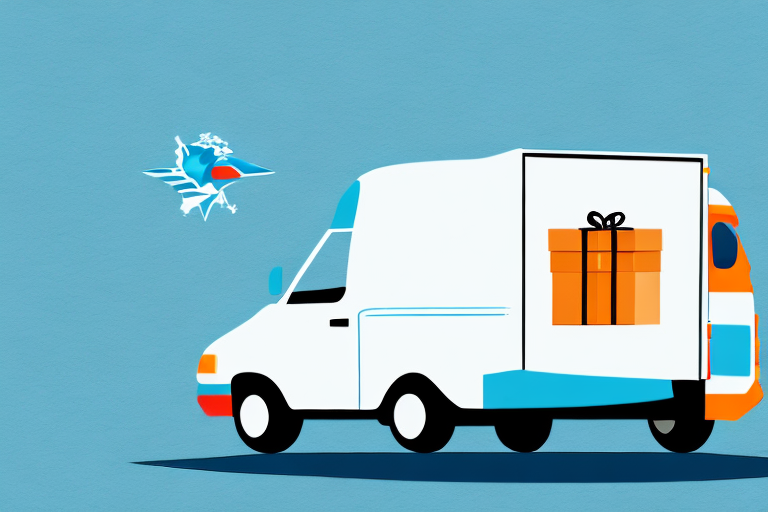What Is a Courier Business? A Comprehensive Guide
A courier business offers delivery services for packages, envelopes, and various other items. This industry has a rich history dating back centuries, with its origins tracing to ancient civilizations like Egypt, where government officials utilized messengers on foot or horseback to deliver important messages.
Today, courier services have evolved significantly, providing a wide array of delivery options including express delivery, same-day delivery, international delivery, and even innovative solutions like drone delivery. With the rise of e-commerce, the demand for efficient and reliable courier services has surged, making it a critical component of the modern economy.
The History and Evolution of Courier Services
Courier services have been integral to communication and commerce for thousands of years. In medieval Europe, specialized messengers known as couriers were employed to convey messages between royalty and their subjects. During the American Revolution, couriers on horseback were essential in delivering dispatches between military leaders.
In the modern era, the courier industry has grown into a multibillion-dollar sector. Companies like DHL, FedEx, and UPS have become global leaders, utilizing advanced logistics and technology to manage vast delivery networks. Despite the dominance of these large corporations, numerous small and independent courier services continue to operate worldwide, often catering to niche markets such as same-day delivery, medical courier services, and legal document transfers.
The advent of the internet and the growth of e-commerce have dramatically impacted the courier industry. According to Statista, the global courier, express, and parcel market was valued at over $350 billion in 2022 and is expected to continue growing as online shopping becomes increasingly prevalent. This shift has pushed courier companies to adopt innovative delivery methods and technologies to meet consumer demands for speed and reliability.
Types of Courier Services
Courier services have diversified to accommodate various delivery needs based on the size, weight, and urgency of items being delivered. The primary types of courier services include:
- Same-Day Delivery: Ideal for urgent deliveries that need to be completed within a few hours, such as important documents, medical supplies, or perishable goods.
- Next-Day Delivery: A cost-effective option for less urgent deliveries that can be made by the next business day.
- International Delivery: Facilitates the shipment of packages and documents across national borders, involving additional procedures such as customs clearance.
- Express Delivery: A premium service guaranteeing delivery within a specified timeframe, often within 24 hours.
- Specialized Delivery Services: Tailored services like medical courier services for pharmaceutical deliveries or legal courier services for sensitive legal documents.
Additionally, emerging technologies are introducing services like drone deliveries, which promise faster and more efficient delivery solutions, particularly in hard-to-reach areas.
Starting and Running a Courier Business
Launching a courier business can be a lucrative opportunity given the increasing demand for delivery services. However, it requires careful planning, substantial investment, and strategic management. Below are key components to consider when starting and running a successful courier business:
Business Model and Operations
A typical courier business operates by offering delivery services to customers for a fee, which varies based on delivery type, distance, size, and weight of the package. The business dispatches couriers to pick up packages from customers and deliver them to their destinations, often utilizing tracking systems to monitor packages in real-time and provide updates to customers.
Pros and Cons of Starting a Courier Business
Pros:
- High-profit potential with scalable operations.
- Growing market driven by e-commerce and consumer expectations for fast delivery.
- Opportunity to provide essential services, enhancing community connectivity.
Cons:
- High initial startup costs, including vehicles, technology, and insurance.
- Intense competition, especially from established players like FedEx and UPS.
- Need for a robust customer base to attain profitability.
Essential Equipment and Tools
Key equipment and tools necessary for a courier business include:
- Reliable Vehicles: Vans, trucks, bicycles, or motorcycles suitable for the delivery types handled.
- Communication Devices: Mobile phones and two-way radios for effective communication between dispatchers and couriers.
- GPS Tracking Technology: For real-time tracking of deliveries, enhancing efficiency and customer transparency.
- Dispatch System: Software to organize and prioritize delivery tasks effectively.
- Packaging Materials: High-quality boxes, envelopes, and packing materials to ensure secure delivery of items.
- Insurance: Coverage for vehicles, packages, and liability to protect against accidents, theft, or damage.
Choosing the Right Delivery Vehicle
Selecting an appropriate delivery vehicle is crucial, depending on the nature and volume of deliveries. Factors to consider include:
- Capacity: Ensure the vehicle can accommodate the typical size and volume of packages.
- Fuel Efficiency: Important for managing operational costs.
- Maintenance Costs: Higher costs for larger vehicles should be balanced against delivery needs.
- Operating Environment: Urban settings may benefit from smaller, maneuverable vehicles, while rural areas may require larger, more robust vehicles.
Managing Finances and Expenses
Effective financial management is vital for the sustainability of a courier business. Steps include:
- Startup Cost Calculation: Account for vehicle purchase or lease, technology investments, licensing, and initial marketing.
- Expense Tracking: Regularly monitor expenses such as fuel, maintenance, salaries, and administrative costs.
- Budget Creation: Establish a realistic budget to manage spending and forecast profitability.
- Financial Software: Utilize tools like QuickBooks or other financial management software to streamline accounting processes.
- Invoice and Payment Systems: Implement efficient invoicing practices and clear payment terms to maintain healthy cash flow.
Legal Considerations
Operating a courier business involves navigating various legal and regulatory requirements, such as:
- Licensing and Permits: Obtain necessary business licenses and permits for transportation and delivery services.
- Compliance with Labor Laws: Adhere to regulations pertaining to employee classifications, wages, and working conditions.
- Insurance Requirements: Maintain adequate insurance coverage for vehicles, employees, and liability protection.
- Regulations on Shipping: Comply with laws related to the transportation of hazardous materials or restricted items.
Consulting with a legal professional can help ensure compliance and mitigate potential legal risks.
Marketing and Building a Customer Base
Establishing a strong customer base is essential for the success of a courier business. Effective marketing strategies include:
Digital Presence
Create a professional website that details your services, pricing, and contact information. Incorporate SEO best practices to improve online visibility and attract organic traffic.
Promotions and Discounts
Offer promotions or discounts to first-time customers to encourage trial and foster loyalty. Referral incentives can also motivate existing customers to recommend your services to others.
Partnerships with Local Businesses
Collaborate with local businesses that may require regular courier services, such as restaurants, retail stores, and medical facilities. Providing reliable and discounted services to these partners can lead to steady business and word-of-mouth referrals.
Excellent Customer Service
Providing outstanding customer service helps build trust and encourages repeat business. Responsive communication, timely deliveries, and handling issues efficiently are key aspects of superior customer service.
Technology Integration and Best Practices in Courier Services
Adopting Technology
Integrating technology can greatly enhance the efficiency and effectiveness of a courier business. Benefits include:
- Increased Efficiency: Automated dispatch systems help organize delivery routes and prioritize tasks, reducing delays.
- Better Customer Service: Online tracking systems allow customers to monitor their package status in real-time, improving transparency and satisfaction.
- Data-Driven Decisions: Leveraging analytics can provide insights into operational performance, customer behavior, and market trends.
However, challenges such as the cost of implementation and training employees to use new systems must be considered. Selecting scalable and user-friendly technologies can mitigate these issues.
Popular technologies in the courier industry include route optimization software, mobile apps for couriers, and customer relationship management (CRM) systems.
Best Practices for Timely and Safe Deliveries
Ensuring timely and safe deliveries is crucial for maintaining customer trust and satisfaction. Implementing the following best practices can help achieve this:
- GPS Tracking: Utilize GPS technology to monitor couriers in real-time, allowing for route adjustments and timely deliveries.
- Safety Gear and Training: Provide couriers with appropriate safety gear and training on safe driving or cycling practices to prevent accidents and ensure the security of packages.
- Clear Communication: Establish open lines of communication between couriers, dispatchers, and customers to address any issues promptly.
- Robust Customer Support: Have a system in place to handle delivery disputes, delays, or lost packages efficiently and fairly.
Growing and Expanding Your Courier Business
To ensure long-term success and sustainability, it is important to implement strategies for growth and expansion. Consider the following approaches:
Investing in Marketing and Advertising
Allocate resources to strategic marketing and advertising campaigns to enhance brand visibility and attract new customers. Utilize digital marketing channels such as social media, search engine marketing, and email marketing to reach a broader audience.
Expanding Service Offerings
Diversify your service portfolio by adding specialized delivery options like refrigerated transport for perishable goods, oversized package handling, or same-hour delivery services. This can open up new market segments and increase revenue streams.
Partnering with Other Businesses
Forge partnerships with complementary businesses to expand your reach and service offerings. For example, partnering with e-commerce platforms, local retailers, or medical facilities can provide a steady stream of delivery requests.
Geographical Expansion
Consider expanding your delivery areas to encompass new regions or cities, thereby increasing your customer base and market presence. Ensure that you have the necessary infrastructure and resources to support operations in new areas before expanding.
Investing in Human Resources
As your business grows, invest in hiring and training additional staff to maintain service quality and manage increased demand. Maintaining a motivated and well-trained workforce is essential for operational efficiency and customer satisfaction.
Conclusion: Key Takeaways on Running a Successful Courier Business
Launching and operating a successful courier business requires comprehensive planning, strategic investment in technology and equipment, and a steadfast commitment to customer service. Understanding the historical context and current landscape of the courier industry can provide valuable insights into market dynamics and growth opportunities. By offering diverse delivery services, implementing efficient operational practices, leveraging technology, and employing effective marketing strategies, your courier business can thrive in a competitive market. Continuous adaptation and focus on safety, reliability, and customer satisfaction are paramount in establishing a profitable and sustainable courier enterprise.




















